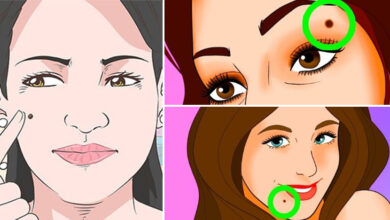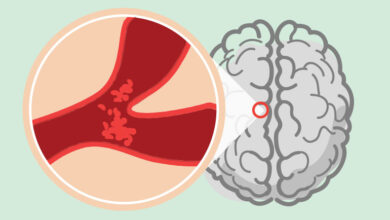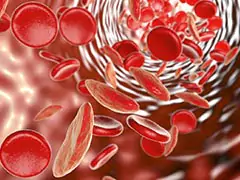Facts of Diabetes: Understanding, Symptoms, Causes, Prevention and Treatment
Type 1 diabetes occurs because the patient’s immune system attacks and destroys the pancreatic cells that produce insulin. This results in an increase in blood glucose levels, resulting in damage to body organs. Type 1 diabetes is also known as autoimmune diabetes. The trigger for this autoimmune condition is still unknown. The strongest guess is caused by genetic factors of patients who are also influenced by environmental factors.
This one diabetes mellitus is also often known as insulin dependent diabetes. This naming refers to the association of this type of diabetes with the body’s inability to produce insulin.
At present, type 1 diabetes can only be treated using insulin, with careful monitoring of blood glucose levels through a blood testing monitor. The basic treatment for type 1 diabetes, even for the earliest stages, is insulin replacement. Without insulin, ketosis and diabetic ketoacidosis can cause coma and can even lead to death. Emphasis is also given on adjusting lifestyle (diet and exercise).
However, it should be understood that giving insulin therapy may be different for each person. The amount of insulin you will need every day will depend on various factors including your diet, physical activity level, and how severe your diabetes is. Compared to type 2 diabetes, this type of diabetes is indeed fairly less common. However, this condition can occur at any age, especially children and adolescents.
3. Type 2 diabetes
This is the type of diabetes with the highest number of patients. Type 2 diabetes can occur at any age. In type 2 diabetes, your body still produces the hormone insulin but the amount is small. This makes the body unable to use insulin to process blood sugar into energy effectively. In medical terms this condition is called insulin resistance.
About 90-95% of people with diabetes in the world suffer from this type of diabetes. In general, this type of diabetes can affect anyone at any age. However, type 2 diabetes is usually more likely to occur in adults and the elderly because of lifestyle factors.
4. Gestational diabetes
This disease usually occurs during the pregnancy process, which then disappears after giving birth. However, this condition can also occur in a woman, even though she has given birth.
Gestational diabetes is not deadly, but high risk makes it difficult for the mother during labor. Some conditions such as high blood pressure and eclampsia haunt mothers who have gestational diabetes.
Symptoms of Diabetes
As we know that diabetes is a very dangerous disease. For that we need to know what symptoms are felt when the body starts being attacked by diabetes.
There are several symptoms that can be used to find out if we have diabetes. These symptoms can already be felt, but not yet realized. Here are some of the most common features of diabetes.
1. Often feel thirsty
Ideally, blood sugar will be filtered by the kidneys and absorbed back into the blood. Unfortunately, because the blood sugar levels of people with diabetes are too high, the kidneys cannot absorb all the sugar in the body. This makes the kidneys work hard to filter and remove excess blood sugar through urine.
As a result, the urine produced is thicker, so the kidneys will automatically take more fluid from the body to thin it. Now, this is when your body will send thirst signals to the brain. That way, you will drink more.
2. Frequent urination
As explained above, one characteristic of diabetes is often feeling thirsty. By feeling thirsty, you will often drink. But because you often drink, the body will try to remove the excess fluid by making you urinate more often. If you urinate frequently more than seven times a day, then immediately consult a doctor.
3. Quickly feel hungry
In the body, food is converted to glucose. Glucose will be used as an energy source for every cell, tissue, and organ of your body. Well, the hormone insulin is responsible for carrying out this process.
If your body fails to produce insulin or does not respond to the hormone insulin properly, your energy needs will not be fulfilled even if you have eaten. As a result, you feel hungry again because your body feels you have not gotten a source of glucose.
If you often feel hungry even though you just ate heavily. Try to check your blood sugar level immediately.
4. Vision disorders
Impaired vision in diabetics usually originates from lens disorders (cataracts) or eye nerve disorders (diabetic retinopathy). The condition of blood sugar that is high enough can trigger a buildup of protein in the lens of the eye resulting in cataracts. Uncontrolled blood sugar can also cause the small blood vessels in the eye to be disturbed and even ruptured so that the eye nerve (retina) cannot work properly.
5. Slow wound healing
The high blood sugar levels of diabetics cause the walls of the arteries to narrow and harden. As a result, the flow of oxygen-rich blood from the heart to the whole body becomes blocked. In fact, parts of the body that are injured require oxygen and nutrients contained in the blood to quickly heal. This is what makes it difficult for body cells to repair damaged tissue and nerves. The result, healing open wounds of diabetics tends to be slower.
6. Weight Drops Quickly
Although appetite increases, diabetics can experience weight loss, even very drastically. Towards adulthood, human weight tends to be stable from year to year. Down or up 1-2 kilos is common, but be careful if the change is up to 5 percent of body weight. Because the ability of glucose metabolism is disrupted, the body will use anything else as a ‘fuel’, such as muscle and fat so that people will look thin.
7. Dry Skin
High blood sugar affects the workings of the nervous system and causes the body to produce more cytokines. Excessive cytokine production can cause inflammation in the body. Well, this inflammation reaction makes your skin feel dry, itchy and cracked.
If you experience one or more of the symptoms of diabetes above, do not hesitate to see a doctor immediately.
Causes of Diabetes
open next page to continue reading….




